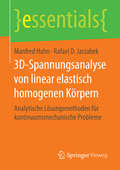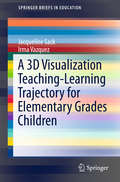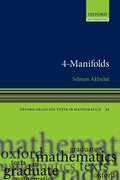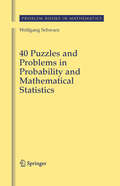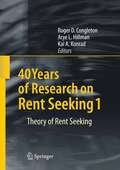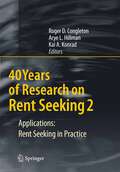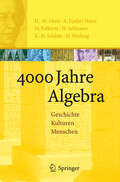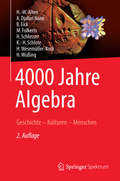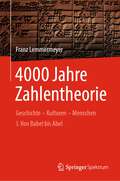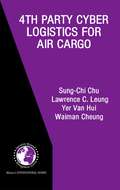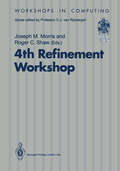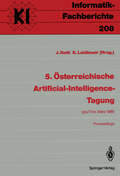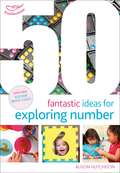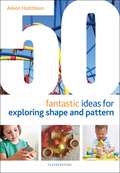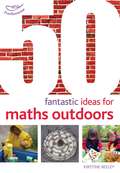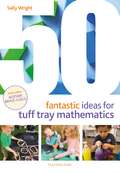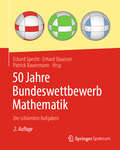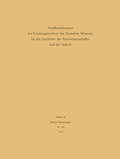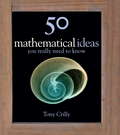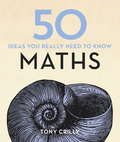- Table View
- List View
3D shapes - a shape made up of 5 multilink cubes (tactile)
by RnibThis diagram shows a shape made up of cubes: the side view, front view, and view from above. Labels explain how each view appears, and simple shapes also show the user each view.
3D shapes - a triangular prism (tactile)
by RnibThis diagram shows the front and side view of a triangular prism, to give the user an idea of its three-dimensional shape. Braille labels and simple shapes guide the user through the image.
3D shapes by view (tactile)
by Adrian FarnsworthEach of these six pages shows a shape with front, side and plan views titled in braille.
3D shapes - representations (tactile)
by RnibThis two-page diagram shows a series of three-dimensional shapes - depicting their end and side views. The shapes included are: Triangular prism, Circular prism Tetrahedron and Cone. Braille labels and simple shapes guide the user through the image.
3D-Spannungsanalyse von linear elastisch homogenen Körpern: Analytische Lösungsmethoden für kontinuumsmechanische Probleme (essentials)
by Manfred Hahn Rafael D. JarzabekManfred Hahn und Rafael D. Jarzabek stellen zwei neue analytische 3D-Lösungen in der Kontinuumsmechanik vor. Diese analytischen Lösungen können zur Verifikation von numerischen Lösungsmethoden herangezogen werden. Beginnend wird in diesem essential die geschichtliche Entwicklung der analytischen Lösungsmethoden in der Kontinuumsmechanik für den 2D- und 3D-Raum und die daraus entstandenen Probleme aufgeführt. Da die Weiterentwicklung der analytischen Methoden aufgrund der mathematischen Schwierigkeiten vor einigen Jahrzehnten stagnierte und die Anwender numerische Methoden wegen der Entwicklung des Computers bevorzugten, wurden fortwährend nur noch numerische Lösungen für spezielle Probleme berechnet. Heute ist die Mathematik aber weiter, sodass nun doch neue analytische Lösungen gefunden werden können. Dazu stellen die Autoren die ursprünglichen Lösungsansätze vor und vergleichen sie mit dem neuen Lösungsverfahren von Pagano.
A 3D Visualization Teaching-Learning Trajectory for Elementary Grades Children (SpringerBriefs in Education)
by Jacqueline Sack Irma VazquezThis monograph describes the development and use of a 3D visualization teaching-learning trajectory for elementary age learners. Using design research principles, the authors developed this trajectory using the NCTM recommendations and the Spatial Operational Capacity (SOC) theoretical framework to guide lesson development. The SOC framework utilizes actual 3D models, 2D and abstract representations of the actual models, and, a dynamic computer interface, the Geocadabra Construction Box, which integrates these representations dynamically in real time. The work begins with describing the theoretical SOC frameworks that guided the study, the inquiry-based learning focus, the research method used, and informal pre-program interviews with participant children. The next chapter describes introductory activities used to orient the children to the 3D objects that they used throughout the program. The book then focuses on the development of abstract top-view numeric plan representations leading to representations of rectangular prisms, followed by front-side-top view representations. The last chapter shows how numeracy was integrated into the program to support the demanding official mathematics curriculum.
4-Manifolds (Oxford Graduate Texts in Mathematics)
by Selman AkbulutThis book presents the topology of smooth 4-manifolds in an intuitive self-contained way, developed over a number of years by Professor Akbulut. The text is aimed at graduate students and focuses on the teaching and learning of the subject, giving a direct approach to constructions and theorems which are supplemented by exercises to help the reader work through the details not covered in the proofs. The book contains a hundred colour illustrations to demonstrate the ideas rather than providing long-winded and potentially unclear explanations. Key results have been selected that relate to the material discussed and the author has provided examples of how to analyse them with the techniques developed in earlier chapters.
4-Manifolds (Oxford Graduate Texts in Mathematics)
by Selman AkbulutThis book presents the topology of smooth 4-manifolds in an intuitive self-contained way, developed over a number of years by Professor Akbulut. The text is aimed at graduate students and focuses on the teaching and learning of the subject, giving a direct approach to constructions and theorems which are supplemented by exercises to help the reader work through the details not covered in the proofs. The book contains a hundred colour illustrations to demonstrate the ideas rather than providing long-winded and potentially unclear explanations. Key results have been selected that relate to the material discussed and the author has provided examples of how to analyse them with the techniques developed in earlier chapters.
40 Puzzles and Problems in Probability and Mathematical Statistics (Problem Books in Mathematics)
by Wolf SchwarzThis book is based on the view that cognitive skills are best acquired by solving challenging, non-standard probability problems. Many puzzles and problems presented here are either new within a problem solving context (although as topics in fundamental research they are long known) or are variations of classical problems which follow directly from elementary concepts. A small number of particularly instructive problems is taken from previous sources which in this case are generally given. This book will be a handy resource for professors looking for problems to assign, for undergraduate math students, and for a more general audience of amateur scientists.
40 Years of Research on Rent Seeking 1: Theory of Rent Seeking
The last survey of the rent-seeking literature took place more than a decade ago. Since that time a great deal of new research has been published in a wide variety of journals, covering a wide variety of topics. The scope of that research is such that very few researchers will be familiar with more than a small part of contemporary research, and very few libraries will be able to provide access to the full breadth of that research. This two-volume collection provides an extensive overview of 40 years of rent-seeking research. The volumes include the foundational papers, many of which have not been in print for two decades. They include recent game-theoretic analyses of rent-seeking contests and also appHcations of the rent-seeking concepts and methodology to economic regulation, international trade policy, economic history, poUtical com petition, and other social phenomena. The new collection is more than twice as large as any previous collection and both updates and extends the earlier surveys. Volume I contains previously published research on the theory of rent-seeking contests, which is an important strand of contemporary game theory. Volume II contains previously pubHshed research that uses the theory of rent-seeking to an alyze a broad range of public policy and social science topics. The editors spent more than a year assembling possible papers and, although the selections fill two large volumes, many more papers could have been included.
40 Years of Research on Rent Seeking 2: Applications: Rent Seeking in Practice
The last survey of the rent-seeking literature took place more than a decade ago. Since that time a great deal of new research has been published in a wide variety of journals, covering a wide variety of topics. The scope of that research is such that very few researchers will be familiar with more than a small part of contemporary research, and very few libraries will be able to provide access to the full breadth of that research. This two-volume collection provides an extensive overview of 40 years of rent-seeking research. The volumes include the foundational papers, many of which have not been in print for two decades. They include recent game-theoretic analyses of rent-seeking contests and also appUcations of the rent-seeking concepts and methodology to economic regulation, international trade policy, economic history, poUtical com petition, and other social phenomena. The new collection is more than twice as large as any previous collection and both updates and extends the earUer surveys. Volume I contains previously pubhshed research on the theory of rent-seeking contests, which is an important strand of contemporary game theory. Volume II contains previously published research that uses the theory of rent-seeking to an alyze a broad range of public policy and social science topics. The editors spent more than a year assembling possible papers and, although the selections fill two large volumes, many more papers could have been included.
4000 Jahre Algebra: Geschichte. Kulturen. Menschen (Vom Zählstein zum Computer)
by Heinz-Wilhelm Alten A. Djafari Naini Menso Folkerts Hartmut Schlosser Karl-Heinz Schlote Hans Wußing4000 Jahre Algebra: Geschichte – Kulturen – Menschen (Vom Zählstein zum Computer)
by H.-W. Alten A. Djafari Naini B. Eick M. Folkerts H. Schlosser K.-H. Schlote H. Wesemüller-Kock H. WußingDie Entstehung, Entwicklung und Wandlung der Algebra als Teil unserer Kulturgeschichte beschreiben Wissenschaftler von fünf Universitäten. Ursprünge, Anstöße und die Entwicklung algebraischer Begriffe und Methoden werden in enger Verflechtung mit historischen Ereignissen und menschlichen Schicksalen dargestellt. Ein erster Spannungsbogen reicht von den Frühformen des Rechnens mit natürlichen Zahlen und Brüchen zur Lösung einfacher Gleichungen bis hin zur Lösung von Gleichungen dritten und vierten Grades in der Renaissance. Von den misslungenen Versuchen zur Lösung allgemeiner Gleichungen höheren Grades im 17 Jh. zieht sich ein weiterer Bogen zu den berühmten Beweisen des Fundamentalsatzes der Algebra durch Gauß und den genialen Ideen des jungen Galois. Die Wandlung der Algebra von der Gleichungslehre zur Theorie algebraischer Strukturen wird danach ebenso beschrieben, wie die völlig neuen Akzente, die die Computeralgebra in neuester Zeit gesetzt hat. Viele neue farbige Abbildungen bereichern die inhaltlichen Aktualisierungen und Textergänzungen.
4000 Jahre Zahlentheorie: Geschichte - Kulturen - Menschen I. Von Babel bis Abel (Vom Zählstein zum Computer)
by Franz Lemmermeyer4000 Jahre Zahlentheorie nimmt die Leser und Leserinnen mit auf eine Reise durch die Geschichte eines lange Zeit belächelten Gebiets der Mathematik. Im ersten Teil wird das Auf und Ab mathematischer Kulturen geschildert, beginnend mit den ersten zahlentheoretischen Fragestellungen der Babylonier, dem Studium von Primzahlen und vollkommenen Zahlen bei den Griechen und in der islamischen Welt, bis zu den Untersuchungen rechtwinkliger Dreiecke mit ganzzahligen Seitenlängen in Indien und China. Die Erfindung des Buchdrucks und die Wiederentdeckung der griechischen Mathematik, insbesondere des Werks von Diophant, führte zu einem ungeheuren Aufschwung in der Zahlentheorie unter den Händen von Fermat, Euler, Lagrange und Legendre bis hin zu Gauß und seinem Jahrhundertwerk, den Disquisitiones Arithmeticae. Der dritte Teil beschäftigt sich mit der Generation von Zahlentheoretikern nach Gauß, die sich intensiv mit den Disquisitiones auseinandergesetzt haben und welche mit der Anwendung analytischer Methoden Ergebnisse erzielt haben, welche mit elementaren Techniken nur schwer oder gar nicht erreichbar sind; dazu gehören Dirichlet, Jacobi, Abel und Eisenstein. Während die Zahlentheorie bis Fermat nur wenige Kenntnisse der Mathematik verlangt, benötigt man für das Verständnis des Eulerschen Werks bereits Vertrautheit mit der Oberstufenanalysis, danach punktuell auch deutlich mehr.
4th Party Cyber Logistics for Air Cargo (International Series in Operations Research & Management Science #73)
by Sung-Chi Chu Lawrence C. Leung Yer Van Hui Waiman Cheung4th Party Cyber Logistics For Air Cargo is a technical discussion for researchers and practitioners to understand the issues, models, and future directions of air cargo logistics in the cyber era. This book introduces the many aspects of planning and control of air cargo logistics processes in an e-Business environment. The authors approach this subject matter from the perspective of the logistics service providers. There is tremendous potential of achieving industry-wide collaboration between agents of the air cargo industry via an e-Business community platform. At the same time, there are many intellectually challenging problems regarding the architecture, ownership, decision support environment, and knowledge management of such an e-Business platform. The authors provide an evolutionary view to conceptualize the developments of websites where e-Commerce activities and e-Business activities co-exist. Four Web eras are detailed, providing an impetus for the development of frameworks of an e-Business platform for air cargo logistics, or e-Platform. The conceptual framework captures the new elements in cyber logistics and what the framework can do for the industry.
4th Refinement Workshop: Proceedings of the 4th Refinement Workshop, organised by BCS-FACS, 9–11 January 1991, Cambridge (Workshops in Computing)
by Joseph M. Morris Roger C. ShawThis volume contains the proceedings ofthe 4th Refinement Workshop which was organised by the British Computer Society specialist group in Formal Aspects of Computing Science and held in Wolfson College, Cambridge, on 9-11 January, 1991. The term refinement embraces the theory and practice of using formal methods for specifying and implementing hardware and software. Most of the achievements to date in the field have been in developing the theoretical framework for mathematical approaches to programming, and on the practical side in formally specifying software, while more recently we have seen the development of practical approaches to deriving programs from their speCifications. The workshop gives a fair picture of the state of the art: it presents new theories for reasoning about software and hardware and case studies in applying known theory to interesting small-and medium-scale problems. We hope the book will be Of interest both to researchers in formal methods, and to software engineers in industry who want to keep abreast of possible applications of formal methods in industry. The programme consisted both of invited talks and refereed papers. The invited speakers were Ib S0rensen, Jean-Raymond Abrial, Donald MacKenzie, Ralph Back, Robert Milne, Mike Read, Mike Gordon, and Robert Worden who gave the introductory talk. This is the first refinement workshop that solicited papers for refereeing, and despite a rather late call for papers the response was excellent.
5. Österreichische Artificial-Intelligence-Tagung: Igls/Tirol, 28.-31. März 1989 Proceedings (Informatik-Fachberichte #208)
by Johannes Retti Karl Leidlmair50 Fantastic Ideas for Exploring Number (50 Fantastic Ideas)
by Alison Hutchison Alistair Bryce-CleggDeveloping a secure understanding of number in the Early Years is key to ensuring number confidence for future stages of learning. A wide variety of meaningful hands-on experiences are required to develop a child's deep understanding of number. 50 Fantastic Ideas for Exploring Number presents ideas that are all about doing – to not only stimulate the senses, but to also provoke thinking and talking, allow questions to be asked, and ensure that links are made between number concepts and the real world. The ideas require little preparation beforehand, can be used by practitioners without any specific expertise in teaching early number, and include easy-to-source materials. Each area of early number sense is covered from adding on and taking away to number stories, identifying and writing numbers.Alison Hutchison draws on her wealth of experience to present 50 ideas and experiences that make numbers fun and accessible so that, as they explore and investigate, children are fully engaged partners in their learning at this crucial early stage of their number journey.
50 Fantastic Ideas for Exploring Shape and Pattern (50 Fantastic Ideas)
by Alison Hutchison50 Fantastic Ideas for Exploring Shape and Pattern features activities and games filled with rich contexts for learning and discussion, as well as fun opportunities for consolidation and problem-solving.Alison Hutchison draws on her wealth of experience to present ideas in line with the Early Learning Goals for investigating shape and pattern in the world around us. She focuses on helping young children to make connections and develop language, knowledge and understanding of shape and pattern. Whether children build with fabric blocks to create patterns or explore symmetry while playing with natural materials, the easy-to-prepare activities in this book facilitate engaging learning opportunities for children's ideas and interests to be explored.
50 Fantastic Ideas For Maths Outdoors (PDF)
by Kirstine Beeley Alistair Bryce-CleggOutdoor learning is not just about taking what we do indoors and moving it out through the door of our setting. It involves equipment and experiences which are both unique and exciting. When planning for maths provision practitioners need to make sure they offer access to these amazing opportunities for learning and integrate them into children's ongoing play and exploration of their natural world. Designed to be used as a dip in dip out collection of easy to use ideas the author has tried to show how exciting outdoor learning can be developed on even the very smallest of budgets. As with all areas of early learning the author acknowledges the way that maths is integrated within play based exploration and linked to many other areas of learning. Offering ways to develop your existing provision as well as building new resources you will enjoy exploring all areas of early maths including number, pattern,shape and measuring.
50 Fantastic Ideas for Tuff Tray Mathematics (50 Fantastic Ideas)
by Sally WrightThe tuff tray is a staple resource in Early Years settings that supports many different styles of learning and play, including incorporating early mathematics through invitations to play. The tuff tray is extremely versatile and its shape and height promotes collaborative play as young children negotiate space and resources.50 Fantastic Ideas for Tuff Tray Mathematics is filled with inspiring ideas for exploring mathematical concepts such as size, shape, capacity, quantity, distance, volume and numbers using tuff trays. From exploring time with ice cubes to cutting shapes out of tortilla wraps, Sally Wright presents opportunities for mathematical learning objectives to be met in an exciting and creative way.
50 Jahre Bundeswettbewerb Mathematik: Die schönsten Aufgaben
Dieses Buch wird alle Liebhaber der Mathematik (und die es werden wollen) durch eine Fülle von reizvollen und unterhaltsamen Problemstellungen aus Algebra, Geometrie, Kombinatorik und Zahlentheorie begeistern. Vierzig ausgewählte Aufgaben aus 50 Jahren Bundeswettbewerb Mathematik werden mit ausführlichen Lösungen, Einblicken in das mathematische Umfeld und inhaltlichen Variationen reich illustriert präsentiert. Von der Mathematik geht für viele seit jeher eine besondere Faszination aus. Wer tiefer in sie eindringt, entdeckt ihre Schönheit, ihre Eleganz und ihre unendliche Vielfalt und stößt immer wieder auf überraschende Resultate. Hiermit bereits bei Schülerinnen und Schülern Interesse zu wecken, ist eines der Anliegen des Bundeswettbewerbs Mathematik. Mit seinen außergewöhnlichen Aufgaben regt er seit nunmehr einem halben Jahrhundert Jugendliche an, sich intensiv mit elementarer Mathematik auf höherem Niveau zu beschäftigen und Erfahrungen im Problemlösen zu sammeln.Anhand von ausgewählten und besonders ansprechenden Problemstellungen dokumentiert dieses Buch deren Reiz und beleuchtet ihren jeweiligen mathematischen Hintergrund. Darüber hinaus sind alle Aufgaben, die seit dem ersten Lauf des Bundeswettbewerbs Mathematik im Schuljahr 1970/71 gestellt worden sind, vollständig enthalten.
50 Jahre GAMM: Im Auftrag und unter Mitwirkung des Fachausschusses für die Geschichte der GAMM
by Gesellschaft für Angewandte Mathematik und Mechanik Helmuth Gericke50 Maths Ideas You Really Need to Know (50 Ideas You Really Need to Know series)
by Tony CrillyJust the mention of mathematics is enough to strike fear into the hearts of many, yet without it, the human race couldn't be where it is today. By exploring the subject through its 50 key insights - from the simple (the number one) and the subtle (the invention of zero) to the sophisticated (proving Fermat's last theorem) - this book shows how mathematics has changed the way we look at the world around us.
50 Maths Ideas You Really Need to Know (50 Ideas You Really Need to Know series)
by Tony CrillyWho invented zero? Why 60 seconds in a minute? How big is infinity? Where do parallel lines meet? And can a butterfly's wings really cause a storm on the far side of the world? In 50 Maths Ideas You Really Need to Know, Professor Tony Crilly explains in 50 clear and concise essays the mathematical concepts - ancient and modern, theoretical and practical, everyday and esoteric - that allow us to understand and shape the world around us. Packed with diagrams, examples and anecdotes, this book is the perfect overview of this often daunting but always essential subject. For once, mathematics couldn't be simpler. Contents include: Origins of mathematics, from Egyptian fractions to Roman numerals; Pi and primes, Fibonacci numbers and the golden ratio; What calculus, statistics and algebra can actually do; The very real uses of imaginary numbers; The Big Ideas of relativity, Chaos theory, Fractals, Genetics and hyperspace; The reasoning behind Sudoku and code cracking, Lotteries and gambling, Money management and compound interest; Solving of Fermat's last theorem and the million-dollar question of the Riemann hypothesis.

